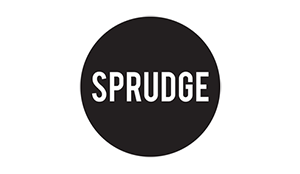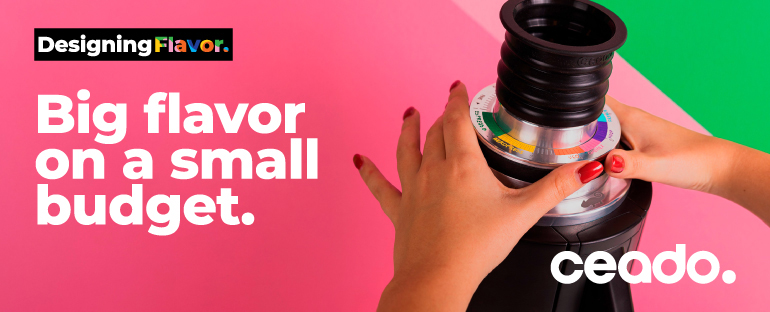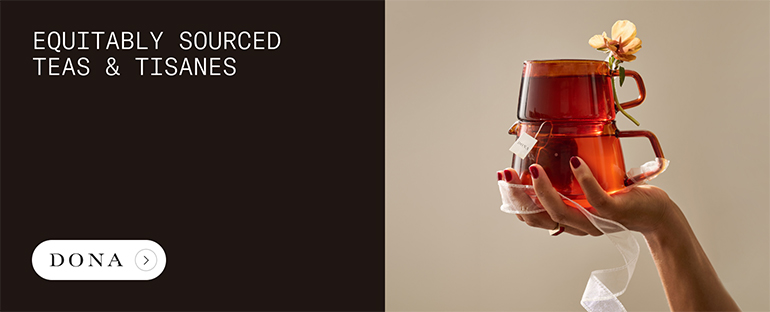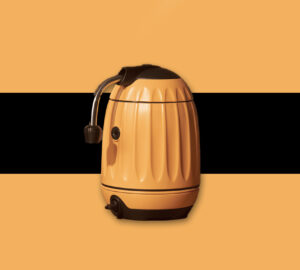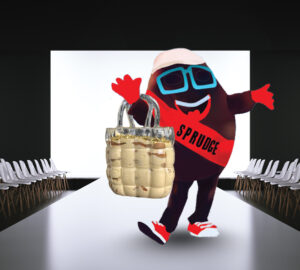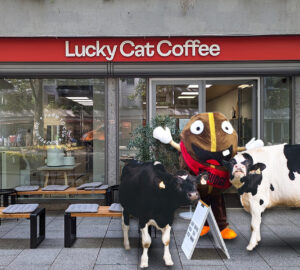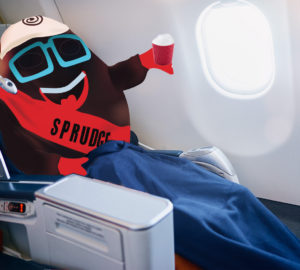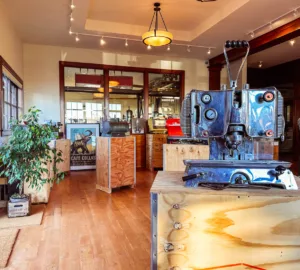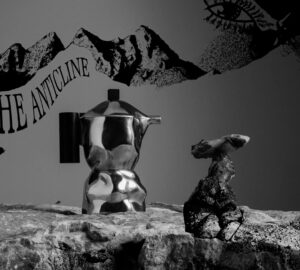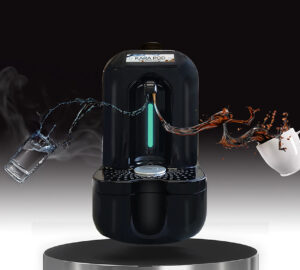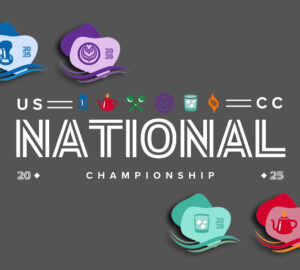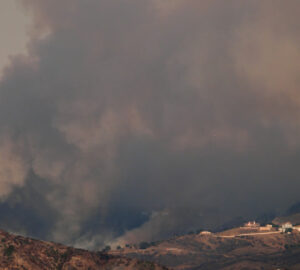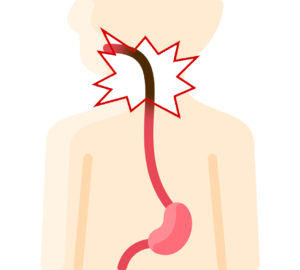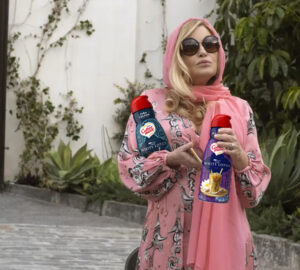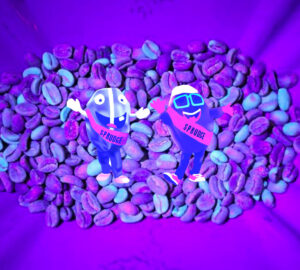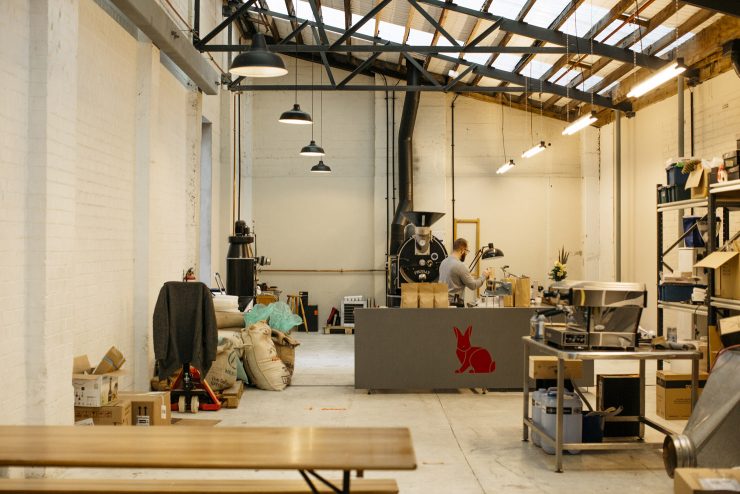
When Red Rabbit Coffee Company opened its doors in October of 2013, and Sprudge reporters were among the first on the scene. Starting their journey in Hannah Laneway in Wellington, the small newcomer quickly earned a reputation for quality, prioritizing what’s in the cup over every other aspect of the business. The company quickly outgrew its small space in Wellington, and founder Steve Barrett knew that he would need to find a larger location. He looked north to the largest city in New Zealand: Auckland.
Stepping into Red Rabbit’s new Auckland roastery and espresso bar is like that first breath you take after being under water for a bit too long. The building carries on for days, and all operations take place in one room with Barrett at the roaster, easily visible from the front door. Simplicity rules the roost here, with only a three-group Kees van der Westen Spirit espresso machine and the Mahlkönig EK 43 grinder being given real estate on the oversized bar. After a quick greeting, Barrett has to finish up some last-minute roasting for the day so he offers me a coffee. Gladly accepting, I sit down with my long black to enjoy the moment. With a thick, syrupy body and a sweetness that doesn’t end, this season’s Hopper espresso is bright and refreshing. Still sipping away, Barrett joins me at the table to tell me a bit more about the move to Auckland’s hip Parnell neighbourhood.
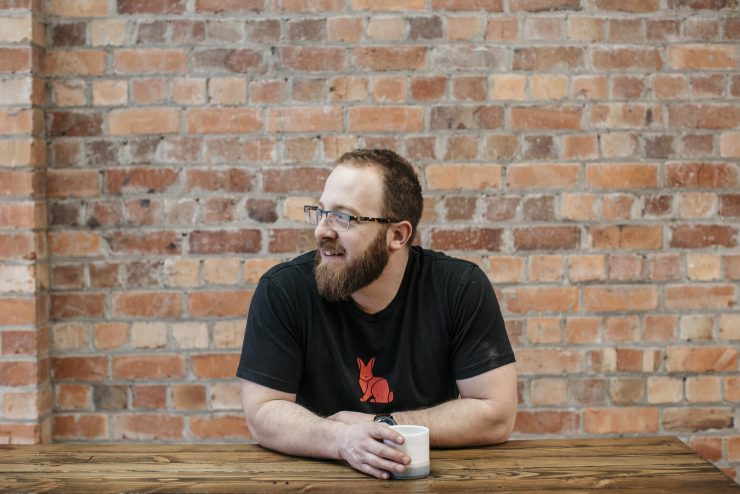
Barrett’s passion for the business is immediately apparent as he sits to share the story of Red Rabbit. Coming from a background in cooking as well as a bit of time in sales, he came to love the rejuvenating power of visiting his local cafe for a coffee. His passion for hospitality combined with a desire to bring in new flavors to the coffee scene, but Barrett knew he would have to differentiate between the industry side of business and the average customer side.
“Front of the bar is all about customer service,” he tells me, “[and] we have to make them feel great about their experience.” He believes educating his customers is a simple way to be relatable, and uses tasting notes as an example, explaining that if a coffee tasting note is highlighted to a customer and they can taste it as well, it can be the start of a journey for them in coffee knowledge.

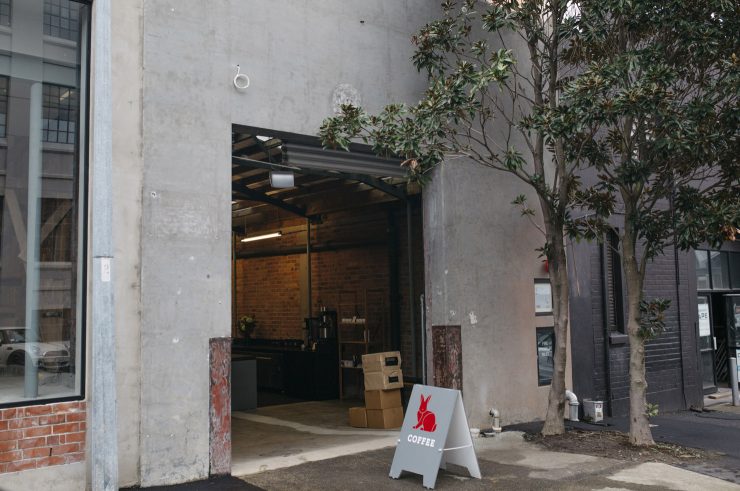
When asked about the move from Wellington to Auckland, Barrett laughs and explains that it was a simple need for more space, combined with his own personal desire to live in Auckland, a city with a coffee scene that’s really booming right now. Choosing the space was a time-consuming task, but when he first saw the new location, he knew it was exactly what he was looking for. “When I first came up with the concept for Red Rabbit, this is actually a larger version of the shed where I started. I rebuilt my first Wega two-group machine for the business in a shed that looked like this,” he says with a smile. “There was a red doormat that was included in the lease, and it was in the shape of a rabbit; the rabbit was always in the shed with me so I looked after it.”
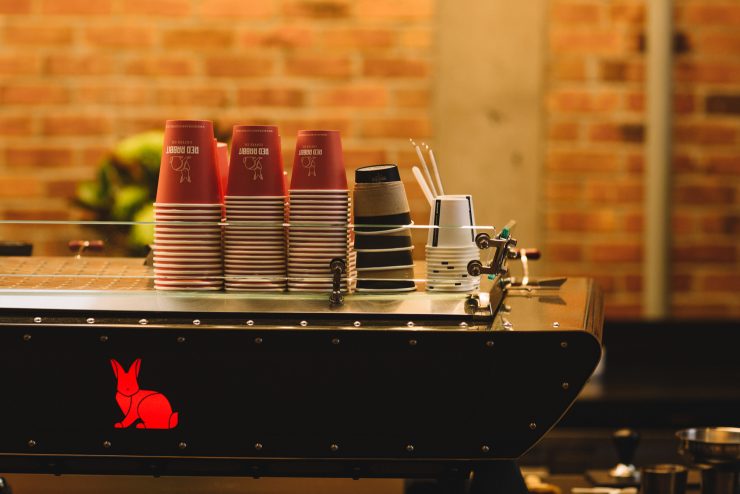
The new shop highlights the transparent nature of the business, with nothing separating the customer from the roaster except the coffee-bagging table, and a large Red Rabbit logo gently denoting the line between the two spaces. Beautifully designed by Fearon Hay Architects, with little details like wood tables with lumber repurposed from the rafters, it really is something different, in a city where differentiation takes some doing.
Looking to the future, Barrett tells me he thinks past the next ten years, into the ten after. His desire is vast, based in a dream to see young coffee professionals take root in their craft, and wanting to push the coffee industry forward through cooperation between satellite roasteries in different countries. He tells me his motivation comes from the benefit he’s seen from people who helped push his own dream forward, and he wants to be able to do the same for others. This new space in Auckland seems like a great beginning.
Thomas Liverett is a freelance journalist based in New Zealand. This is Thomas Liverett’s first feature for Sprudge.
